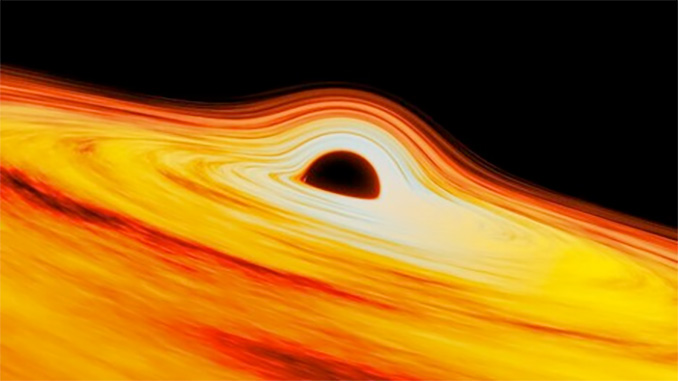
The supermassive black hole lurking at the heart of the Milky Way – Sagittarius A*, or Sgr A* for short – contains about 4.3 million solar masses, and, as it turns out, nearly all of the mass at the very center of the galaxy.
An international team of astronomers, using the Gemini North telescope in Hawaii and the European Southern Observatory’s Very Large Telescope, measured the position and velocity of four stars in the immediate neighbourhood of Sgr A* and found them to be moving in the manner one would expect if the black hole accounted for 99.9 percent of the matter at the center of the Milky Way.
The galactic core is located roughly 27,000 light years from Earth. Despite decades of close observation, astronomers have found it difficult to prove that most of the mass at the heart of the galaxy is concentrated in Sgr A*. But using the Gemini Near Infrared Spectrograph and the SINFONI instrument on the Very Large Telescope to measure the velocities of the four stars near Sgr A*, and the VLT Interferometer to measure position, the team concluded most of the mass at the center of the Milky Way is, in fact, concentrated in the black hole.
“With the 2020 Nobel prize in physics awarded for the confirmation that Sgr A* is indeed a black hole, we now want to go further. We would like to understand whether there is anything else hidden at the center of the Milky Way, and whether general relativity is indeed the correct theory of gravity in this extreme laboratory,” said team member Stefan Gillessen. “The most straightforward way to answer that question is to closely follow the orbits of stars passing close to Sgr A*.”
All mature galaxies appear to feature supermassive black holes in their cores, but how they formed and evolved is not yet known. One of the newly launched James Webb Space Telescope’s priorities is to study the evolution of the earliest galaxies to light up after the Big Bang, shedding light on whether the core black holes formed first or were a result of galactic evolution.
In any case, 4.3 million solar masses is a huge concentration of matter by any earthly standard. But it’s a drop in the bucket compared to the overall mass of the Milky Way. A Sino-French collaboration, using data from the Gaia spacecraft, has determined the overall mass of the Milky Way is on the order of 500 to 800 billion solar masses, slightly lighter than previous estimates.
The results were based on precise Gaia kinematic data on about 150 globular clusters along with more accurate modelling of galactic disk rotation. The study appears in the Monthly Notices of the Royal Astronomical Society.



